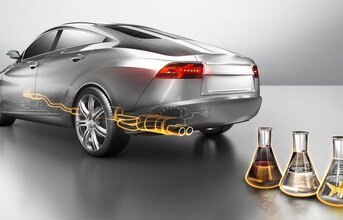
Technology for NOx-free diesel
In many ways, the exhaust gases emitted by Euro-6 diesel engines are already cleaner than some of the ambient air the vehicle itself travels through. This is particularly the case with regard to hydrocarbon, carbon-monoxide, and particle emissions. However, when it comes to nitrogen-oxide emissions, there is still room for improvement.
Close-coupled catalytic converter configuration
For the catalytic converter to work, the active surface of the substrate needs to be at a specific temperature in order to convert the untreated emissions. One way to ensure fast heating of the catalyst is to install the catalytic converter close to the engine.
However, thus far, the size of catalytic converters has made it difficult to install them close to the engine. "Continental has developed the compact catalytic converter for precisely these kinds of applications.
This component has a bivalve construction with the inlet and outlet for exhaust gases on the same side," says Dr. Markus Distelhoff, Head of the Fuel and Exhaust Management Business Unit at Continental.
"This has two advantages. The component is very short, and the external circulation keeps the catalyst hot inside for a long period, with the heat evenly distributed."
Rapid warm-up for underbody designs
If a close-coupled design is not the desired option, Continental's electrically heated catalytic converter (e-cat) can also be used in underbody designs to ensure that the catalyst substrate is quickly heated to the required temperature using the heated disk.
This means drive strategies that frequently switch off the combustion engine can be used in hybrid vehicles, without causing emissions in the cooled-down catalytic converter when the combustion engine is restarted.
Continued to next page


























